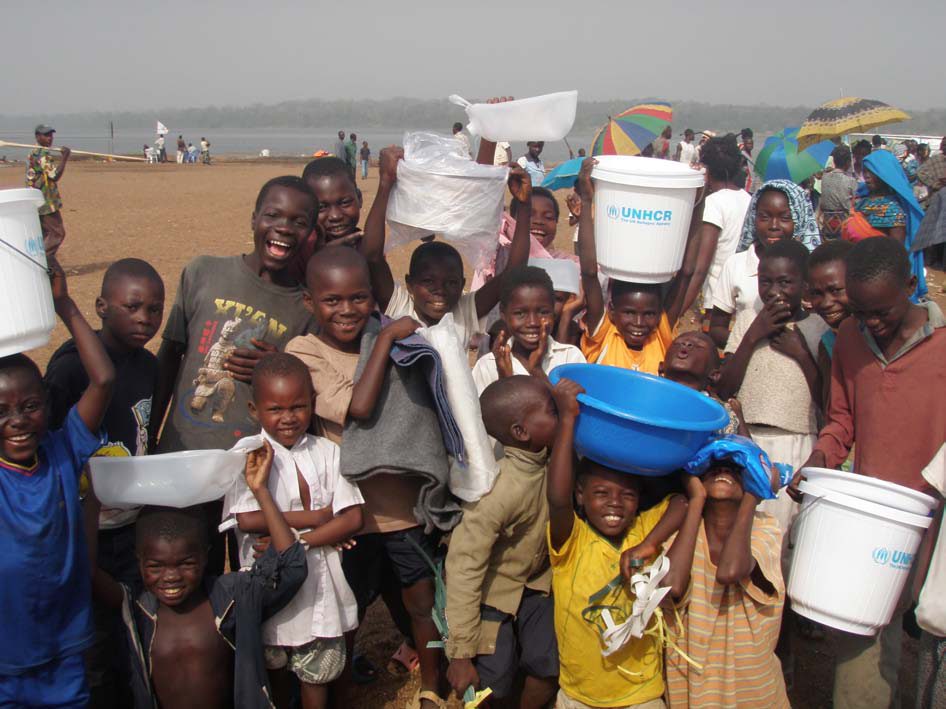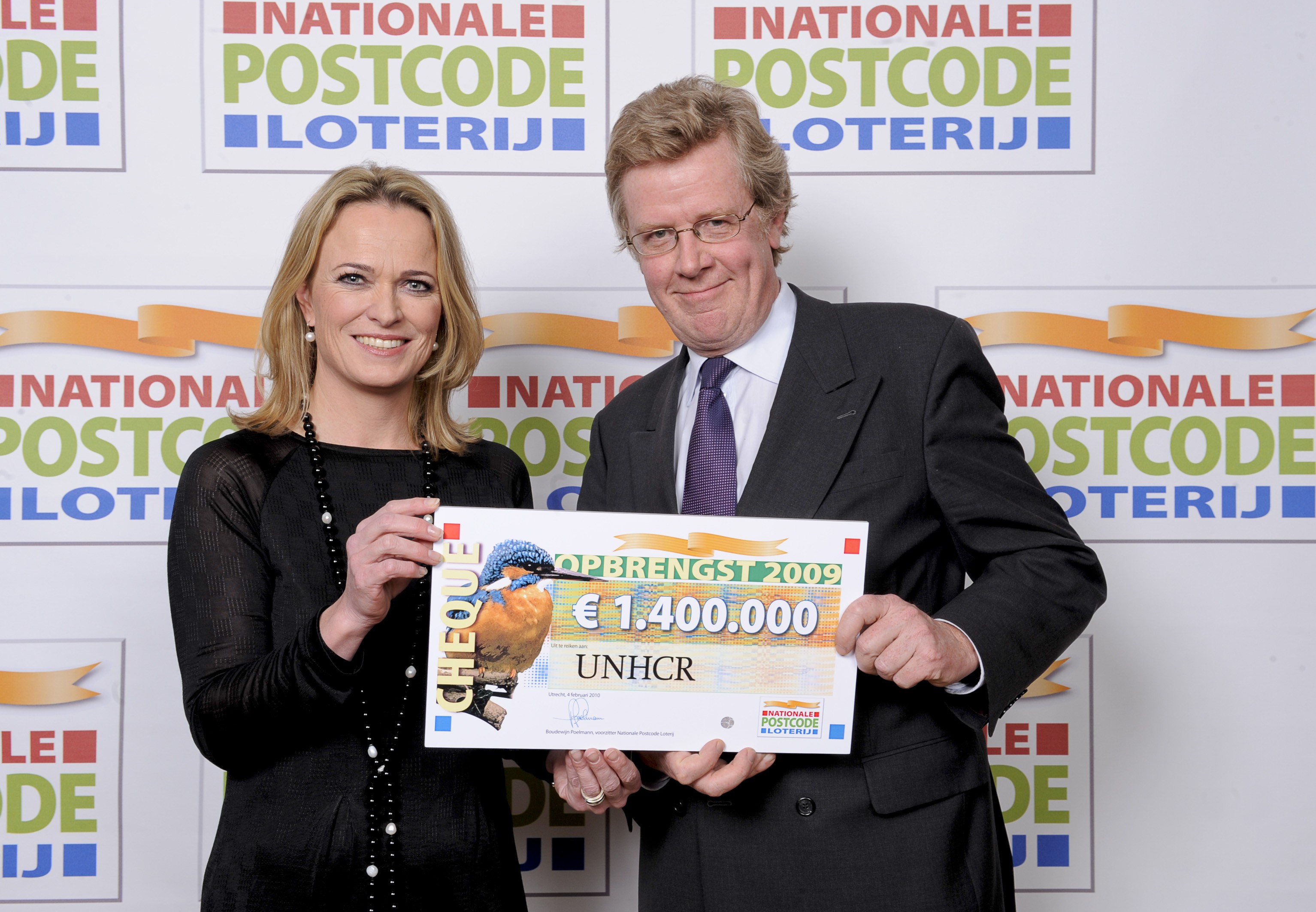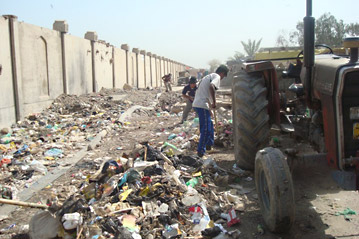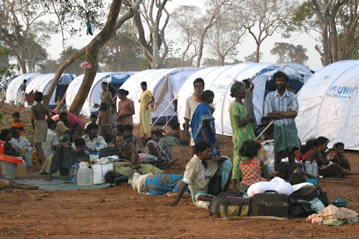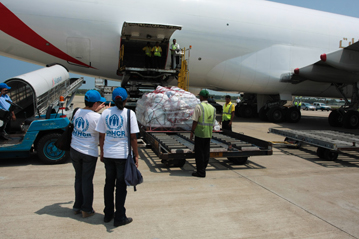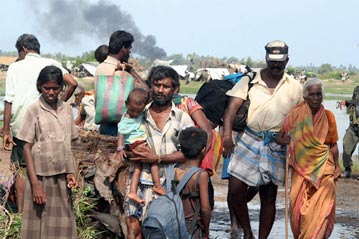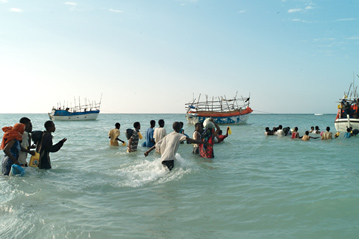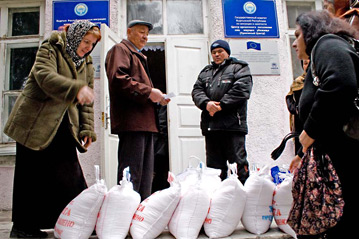Cultivating old relationships in a Kosovo village
Cultivating old relationships in a Kosovo village

ZEGRA, Serbia and Montenegro, Sept. 8 (UNHCR) - Efforts are continuing to rebuild confidence in Kosovo amid a recent UNHCR warning that minority groups should not be forced back to the restive province.
In August, the UN refugee agency advised asylum countries that members of Kosovo's minority communities, as well as some other vulnerable groups, are still in need of international protection and should not be returned against their will, even if their asylum claims are rejected.
The comments were made in view of a disturbing catalogue of attacks on members of minority groups in Kosovo since January 2003, and the sudden explosion of violence in March this year that shook the province to its core and shocked its backers among the international community.
An estimated 230,000 people fled Kosovo after the NATO bombing of Serbia and Serb forces pulled out of the province in the summer of 1999. Most of them were ethnic Serbs, followed by Roma, Ashkaelia, Bosniaks and other minorities who feared reprisals from the majority ethnic Albanians.
Nearly 11,000 minority members had returned to Kosovo since 2001, but the fragile peace was seriously disrupted by three days of inter-ethnic clashes in March this year that left 20 people dead and more than 950 injured. Months later, the return of displaced persons has resumed slowly in several municipalities in the province.
"We have to get a constructive dialogue going among the Kosovo Albanians and the Kosovo Serbs. They live here, their future is and should be here, and they have a stake in the future. They should be in charge of their destiny," said Søren Jessen-Petersen, the new Special Representative to the UN Secretary-General, when he first arrived in Kosovo in mid-August.
He added, "In order to promote and strengthen the internal dialogue, I think we should be ready, all of us, to give a lot of space and a lot of support, so that people living here - inhabitants, officials, authorities - can design the way they want to see Kosovo, the way they want to move forward."
UNHCR has been part of these confidence-building measures. While it does not promote returns to Kosovo for members of minority groups, the agency has been assisting displaced people who actively want to go home, either to stay or to assess the situation.
It recently organised a go-and-see visit to Zegra village in eastern Kosovo's Gjilan/Gnjilane municipality. Prior to the exodus, Serbs had formed 10 percent of the population in the large Albanian-majority village, which is blessed with fertile land and lies close to the border with Macedonia. But in June 1999, the entire Serb population - some 500 of them - fled either to Serbia proper or to nearby Serb villages like Donja Budriga and Pasjane.
Since May this year, small numbers of the displaced Serbs have started returning daily to Zegra from neighbouring villages in order to cultivate corn for animal feed. Even so, security could not be taken for granted - UNHCR and its partners held rehearsals and drills to cover every possible security and logistical scenario before the go-and-see visit took place in July.
On the actual day of the trip, NATO's Kosovo Force and the Kosovo Police
Service (KPS) cautiously led the nine displaced Serbs - six of whom had fled to Serbia - through Zegra village. Of the seven homes they stopped by, three were occupied while the other four had been destroyed. The visits were kept low-key, with a police officer and an international UNHCR staff member approaching the occupied houses first.
The first stop was an old warehouse where only the exterior walls remained standing. An elderly Serb visitor recalled how this building used to employ many locals, Albanians and Serbs alike.
The second stop was a house that was occupied by Albanians (many of whose own houses were destroyed by paramilitaries, security forces or NATO bombs during the 1999 Kosovo crisis). The visitors were greeted by two friendly Albanian women with children, who offered them coffee. The former Serb owner asked for a drink from what was once his well, while another broke off a branch from a fruit tree in the yard, asking to take it back to his father in Serbia.
Throughout the visits, language was not a problem as the visiting Serbs spoke fluent Albanian.
The group also stopped at St. Ilija, a small church that sat on the hillside overlooking Zegra village. The men lit candles at the ruins of the altar, where only the rock framework was left standing. In the silence, they wandered the graveyard seeking out markers with their family names and placing candles next to the broken headstones. The KPS, both Albanian and Serbian, shared their sorrow with the returning visitors.
"My great grandfather was responsible for building and supporting this church. That's why he is buried nearest to it," noted one returning visitor. "We lived in this village alongside Albanians with no problems."
Noting that his godfather was Albanian, he pointed upwards and said, "The first is God in the sky and my Godfather on Earth. We should not see these catastrophes we see here."
There are signs that the scars may be slowly healing, judging from the friendly greetings between the Serb visitors and their former neighbours in the village. Nevertheless, as the March disturbances illustrated all too graphically, such progress is extremely fragile and can be easily overturned.
But even during those terrible three days of looting and burning in the spring, there were signs that the seeds of ethnic reconciliation had taken firm root in some places. Largely unnoticed among the reports of mayhem, there were a number of occasions where local Albanians stood up strongly and courageously in defence of minority members living in their midst.
In the northern Kosovo village of Vushtrri/Vucitrn, for example, a total of 67 houses belonging to members of the Ashkaeli minority were burned down, and 251 of their inhabitants - the majority of whom were returnees since 1999 - had to be evacuated. However, three houses and three families remain, thanks to the intervention of an Albanian police cadet neighbour who stood between the rampaging mob and the houses, saying, "These are good people. You shouldn't harm them."
Back in Zegra, inter-ethnic discussions on farming issues are ongoing, thanks to a multi-ethnic Commission on Agricultural Property set up in 2003 and the non-governmental organization, CARE. Albanian villagers are participating in the commission after they agreed on the principle that Serb land should either be made available to its Serb owners, or that they should negotiate conditions of a legal lease and sign a contract with the owners. Thirteen Serb farmers have shown an interest in renting out their lands, while CARE provided farming tools to both Albanian and Serb farmers. Work is also underway to revitalize the agricultural co-operative, though its status remains unclear.
Despite the progress in community relations, a permanent return looks unlikely for Zegra's displaced Serbs at this point, given that their houses are either destroyed or occupied. However, there is hope that if the fields can be farmed again, perhaps old and new relationships can be cultivated as well.
By Myrna Flood in Zegra, Serbia and Montenegro


